![]()
A brief business trip to China |
|
|

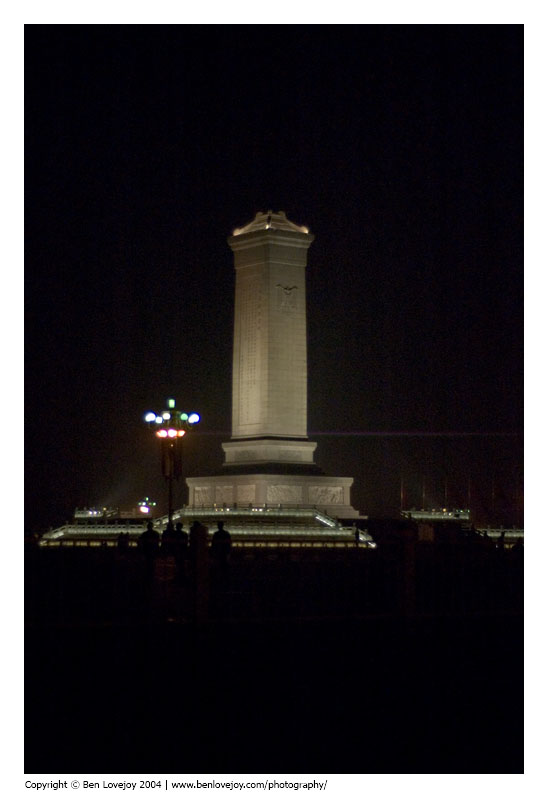
Then went for a quick wander round the area. |
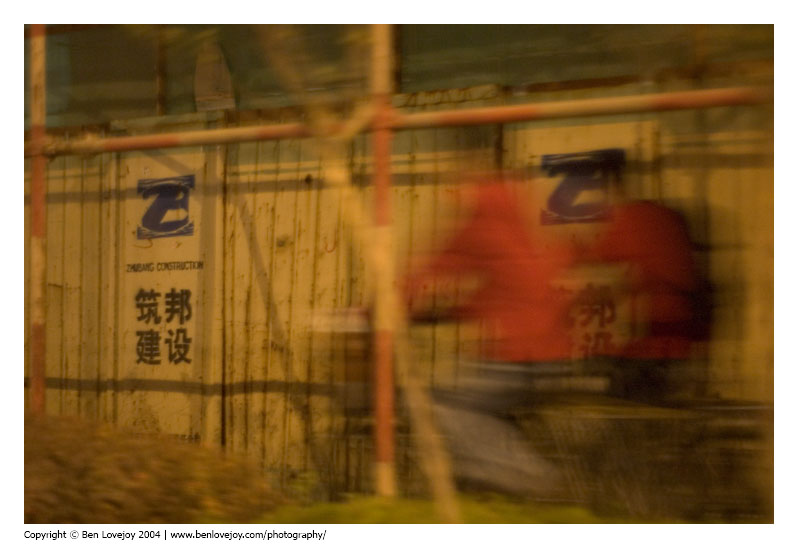
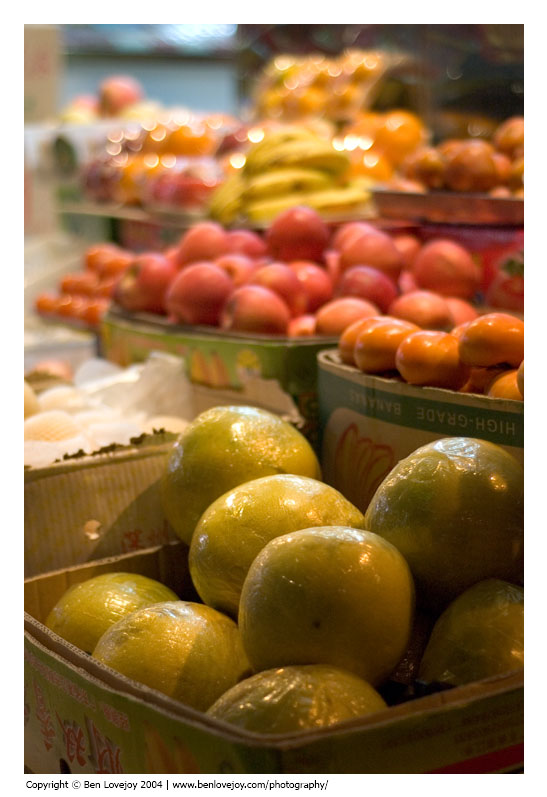
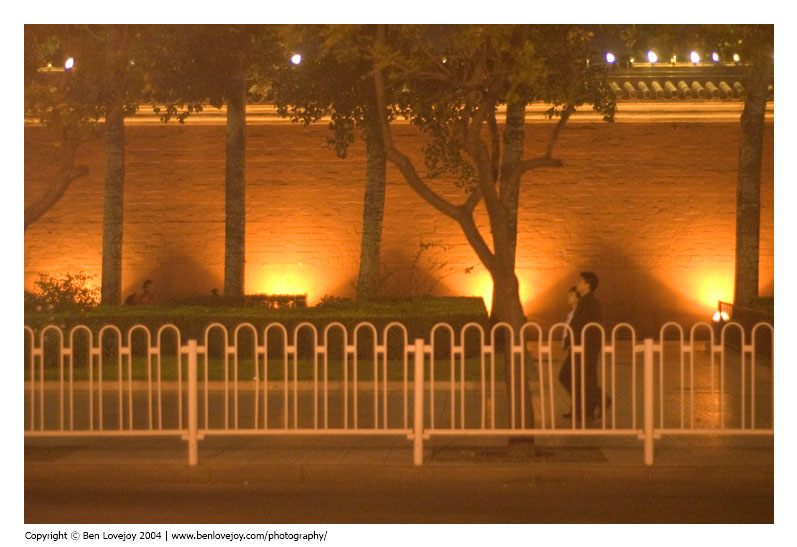
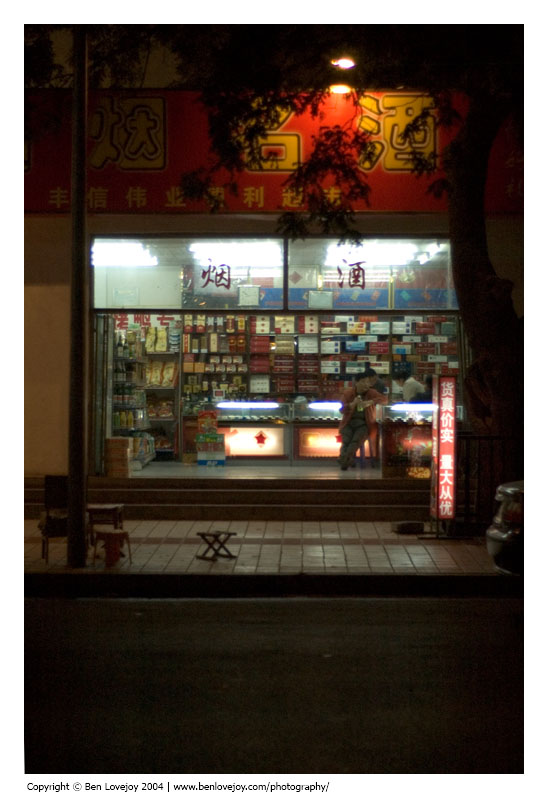
Before hopping back into the cab to get a few hours' sleep! |
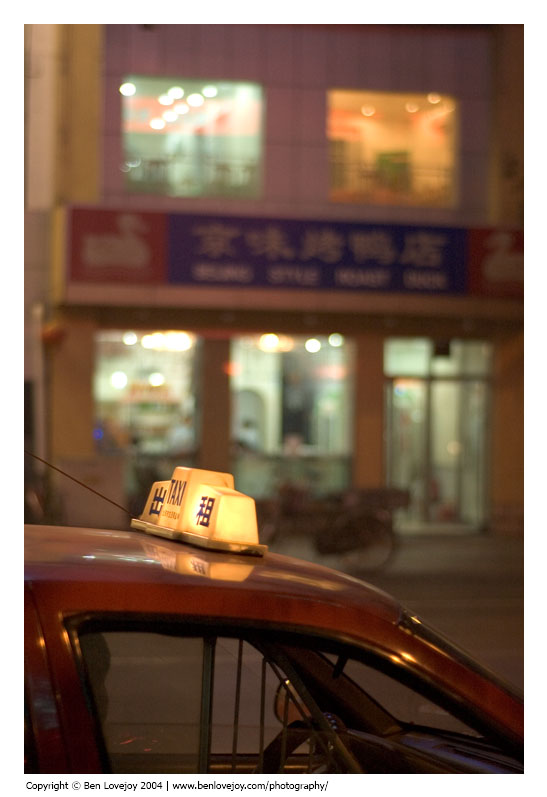
I was staying in Xi'an, a walled city: |
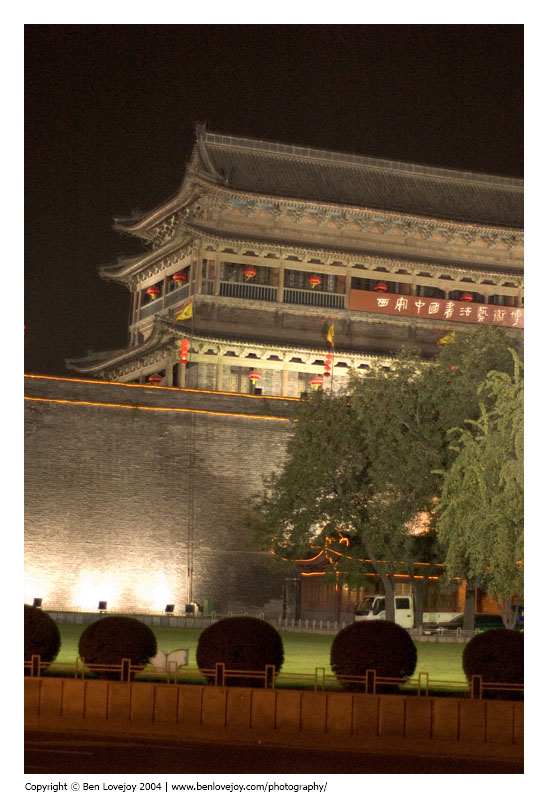
As ever, I was less interested in the finery than the back-streets. |

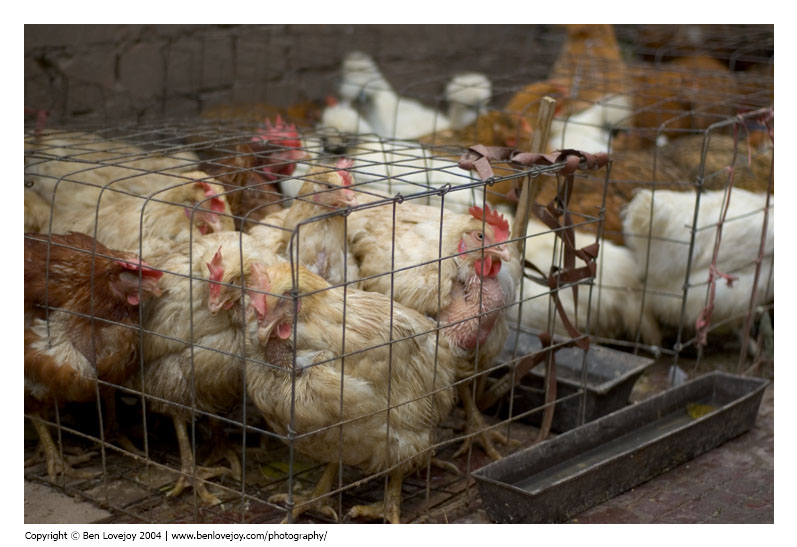
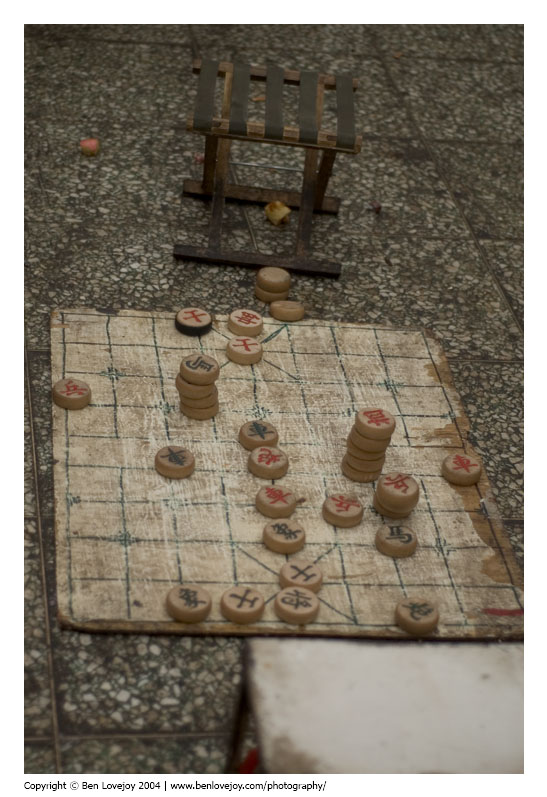
Bicycles are of course a staple form of transport here. |
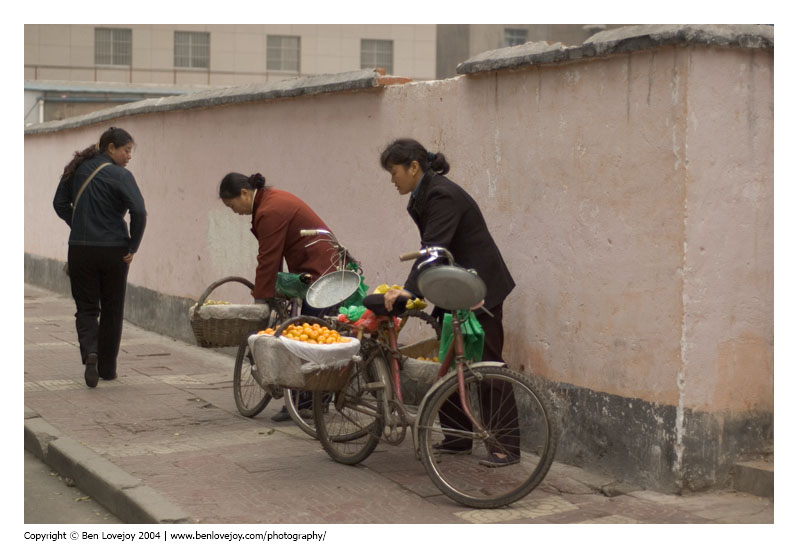
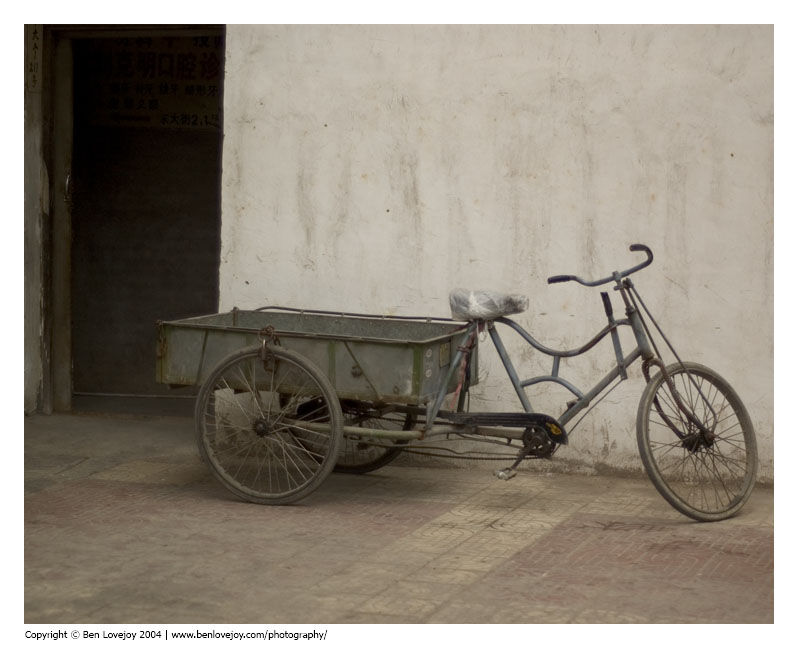
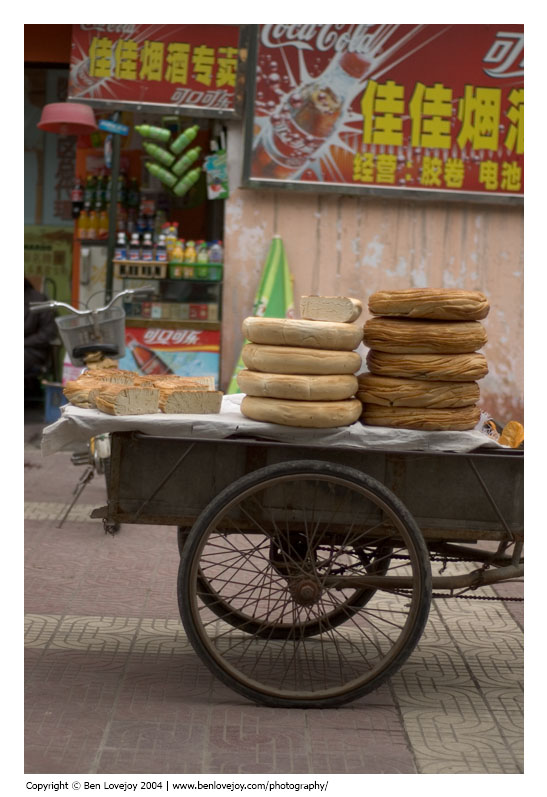
And dumplings the local delicacy. I wasn't a massive fan of them prior to the trip, and was even less so after I was treated to a seven-course meal, every course being dumplings! |
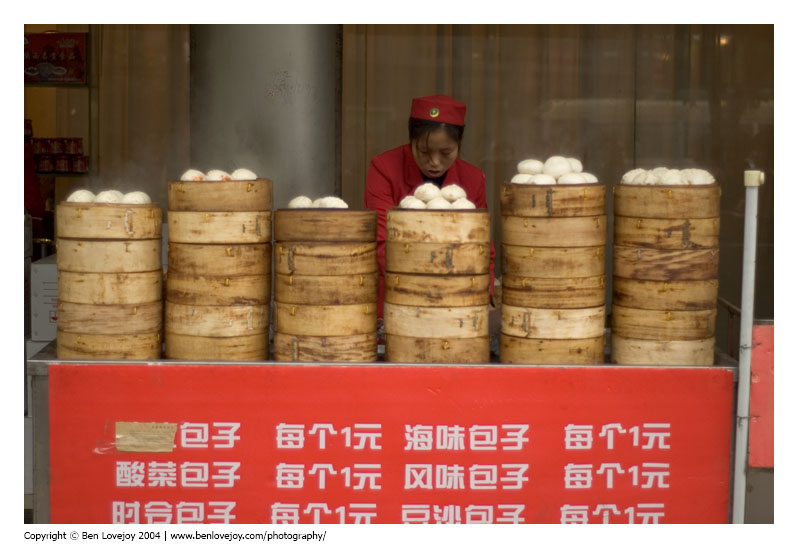
I was working up until Saturday lunchtime, then had the afternoon and Sunday free before flying on to Delhi on Monday morning. My plan was to spend the afternoon and all of Sunday exploring the back-streets on my own. However, I was caught out by that famous Chinese hospitality. The company I was working with in Xi'an asked me when was my flight to India. Without thinking, I said "Monday morning." The next thing I knew, my Sunday had been commandeered. I had a car, a driver, an interpreter and an itinerary. I rarely do the tourist trail, but couldn't escape it this time. We started with one of Qin Shi Huang's palaces in the Li Mountains, a few hours outside Xi'an. Qin Shi Huang was the first Emporer of China, and responsible for, among other things, the Great Wall of China and the Terracotta Warriors (of which more in a moment). It is reputed that he had so many palaces built around China that he didn't manage to visit all of them during his lifetime. |
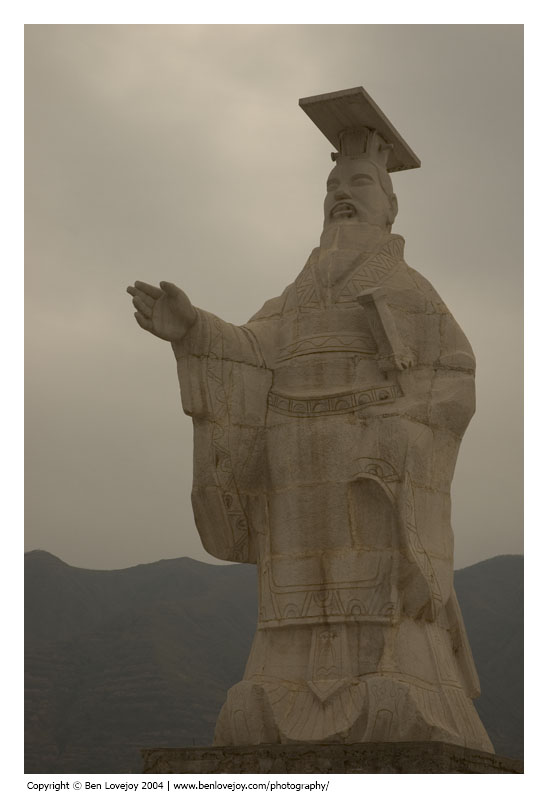
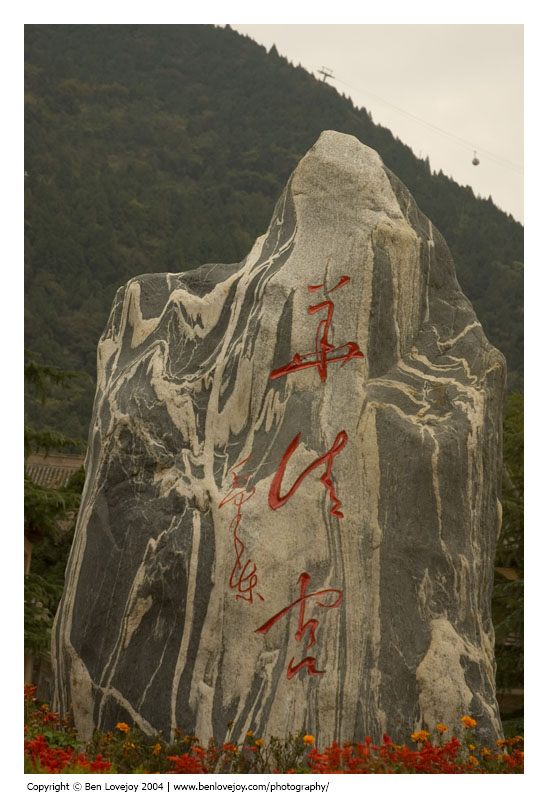
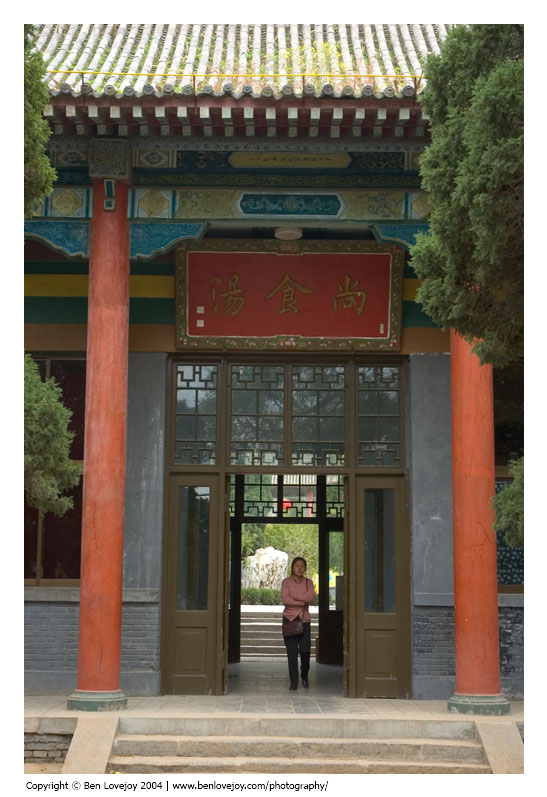
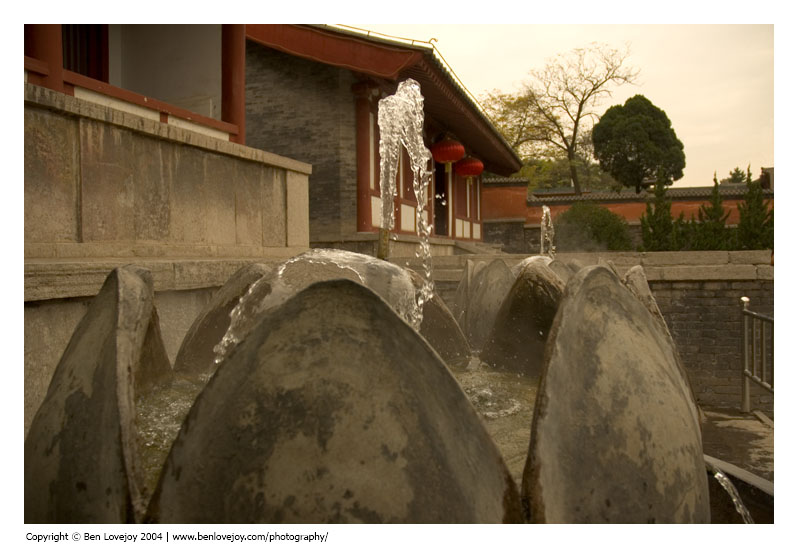
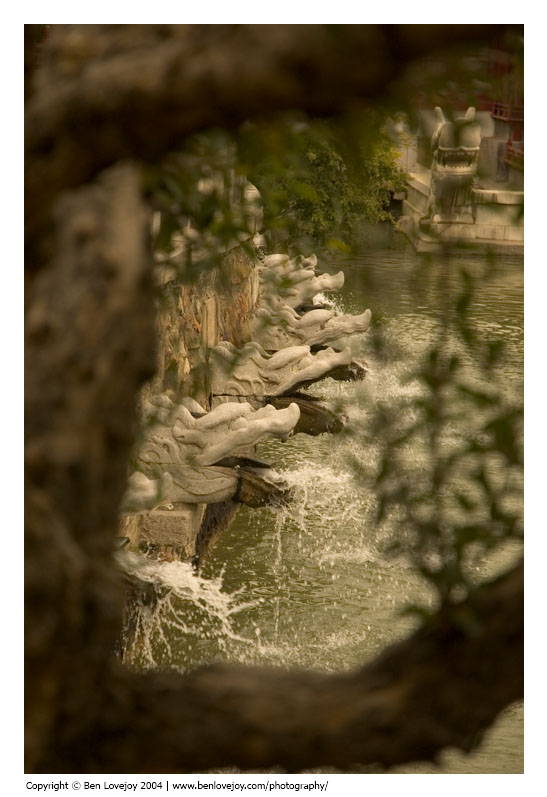
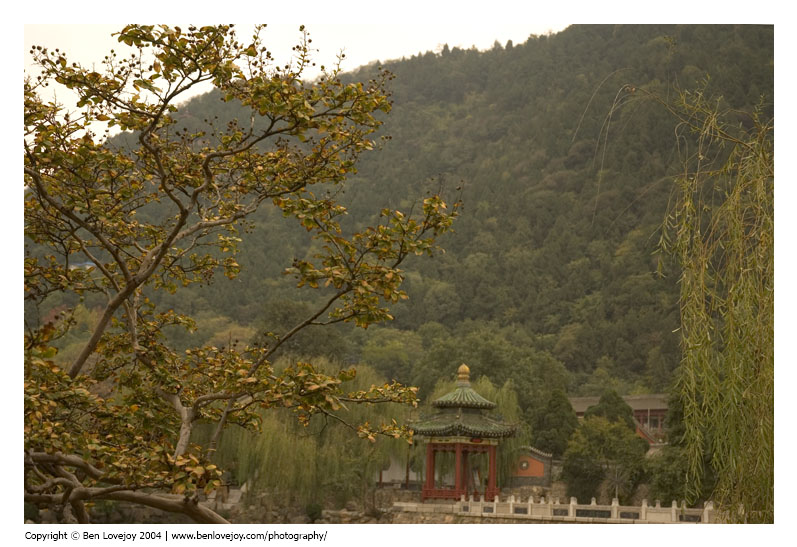
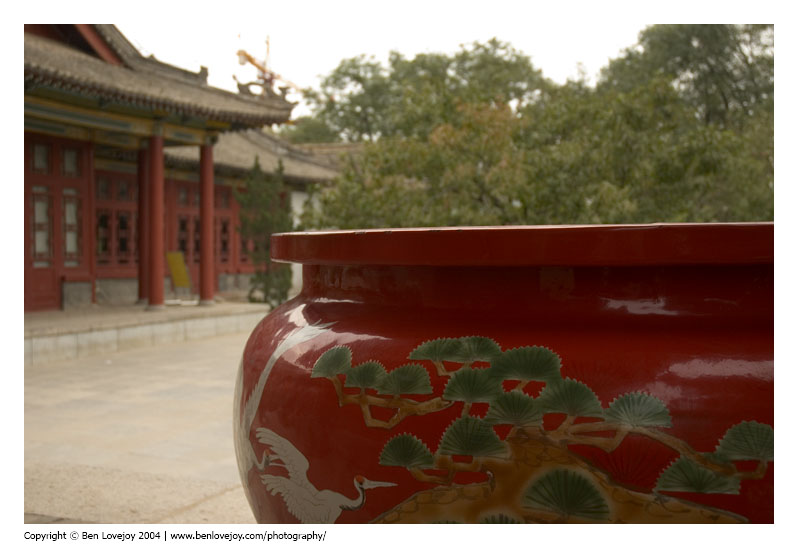
His tomb was a massive creation: |
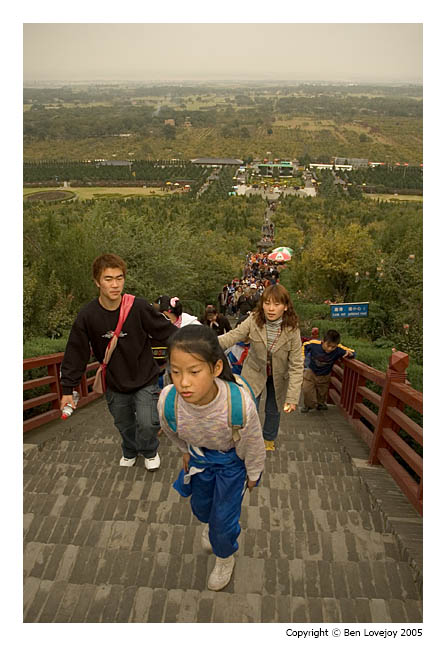
He had the famous Terracotta Warriors created to guard him in the afterlife. These are an estimated 8,000 soldiers, 130 chariots and 670 horses. Made from clay, each one is hand-made and unique. They vary in height, but all are at least six feet. I'd heard of them, seen photos and frankly wasn't that interested in visiting. But it would cause great offense to refuse hospitality, so I reluctantly allowed myself to be dragged there. The reason I hadn't been that excited by the photos is that no photo can recreate the experience of standing there, at the entrance to pit one: |
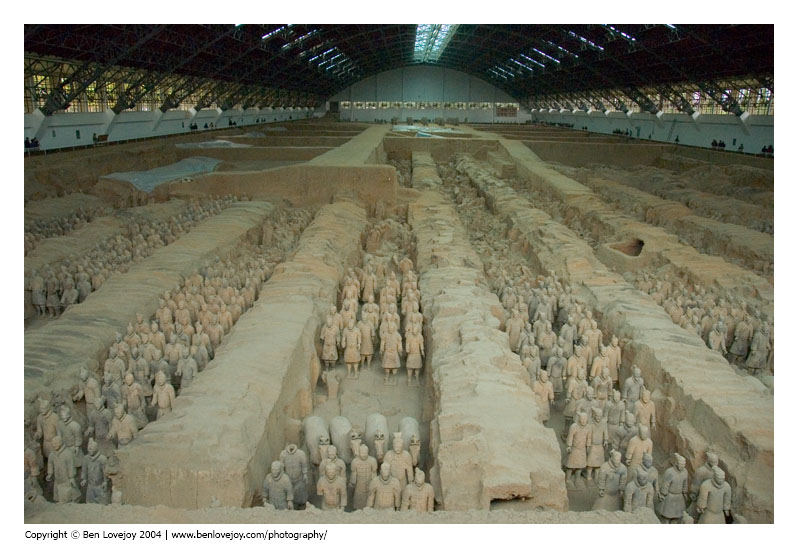
Each trench is 230 metres long, and there are 10 trenches. This is just pit one of four. Remember, every one of those 8000 soldiers was created by hand, but that's not the end of it ... Only one of the warriors was found intact: |
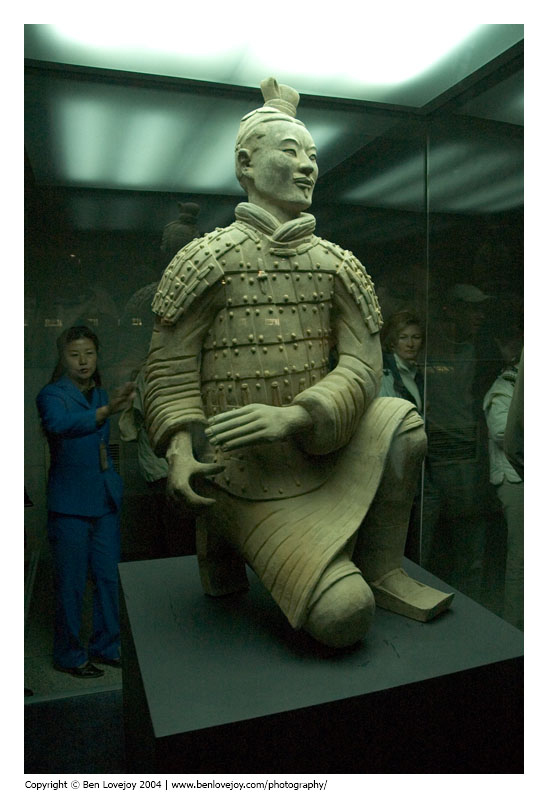
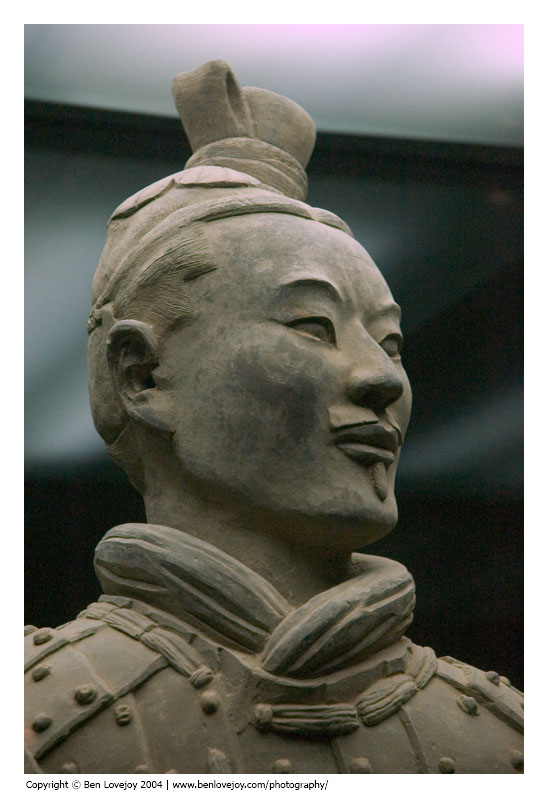
The trenches were covered by wooden planks, then buried beneath earth. Over time, the planks rotted and the earth collapsed onto the warriors, breaking them into many small pieces. All but one of the warriors looked like this when they were uncovered: |
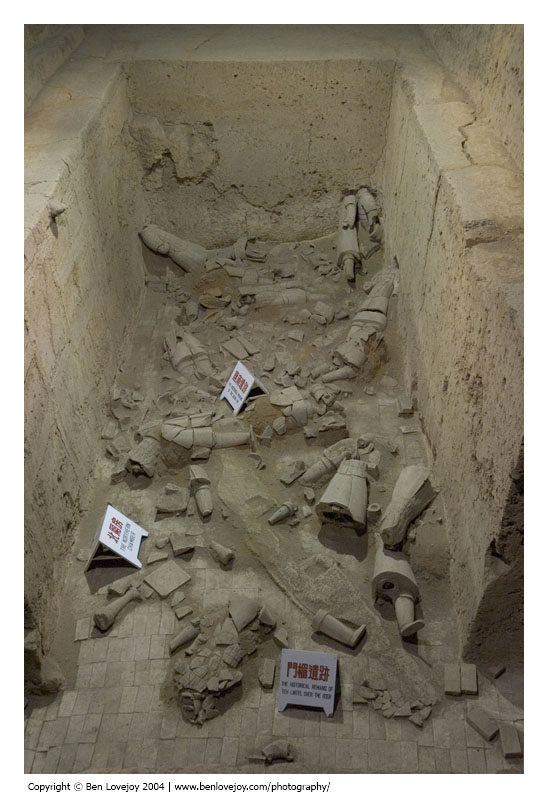
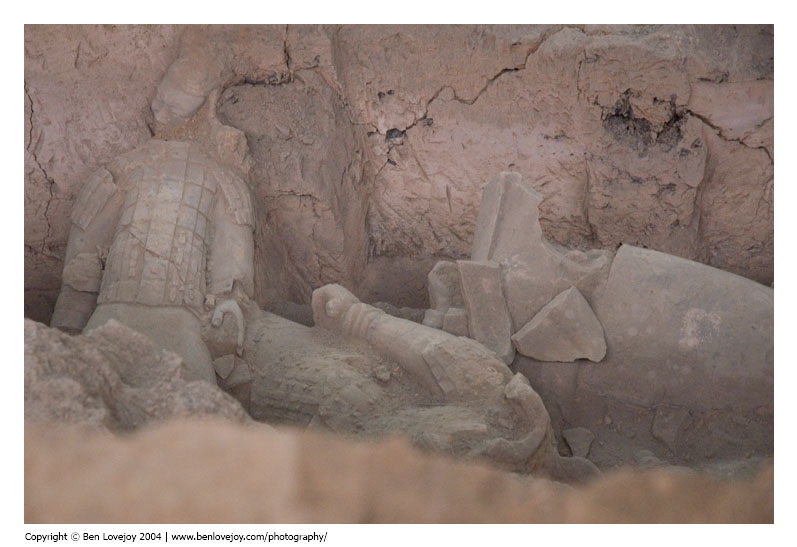
Trenches full of jumbled parts. Just imagine the work needed simply to work out which piece belonged to which warrior, let alone carry out the actual reconstruction! |
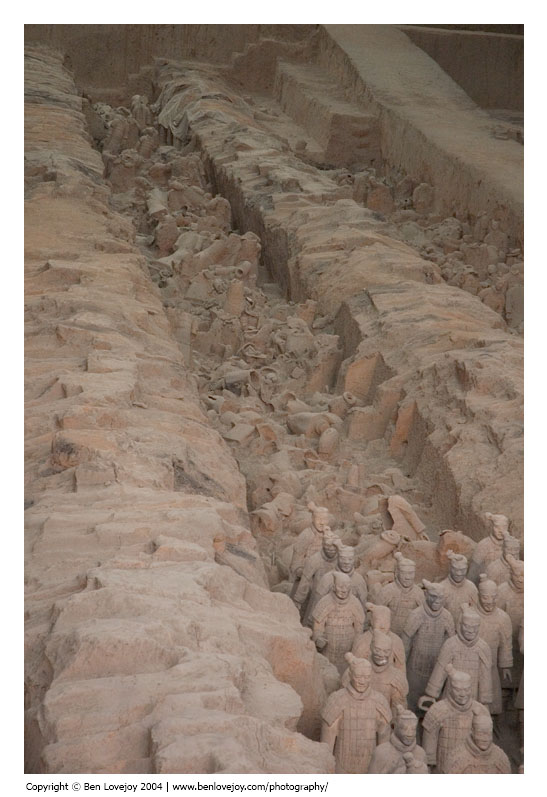
Hundreds of them have been painstakingly put together again by teams of archeologists. Each one took, on average, two years. This is the work that enables us to see today how they looked when they were created. |
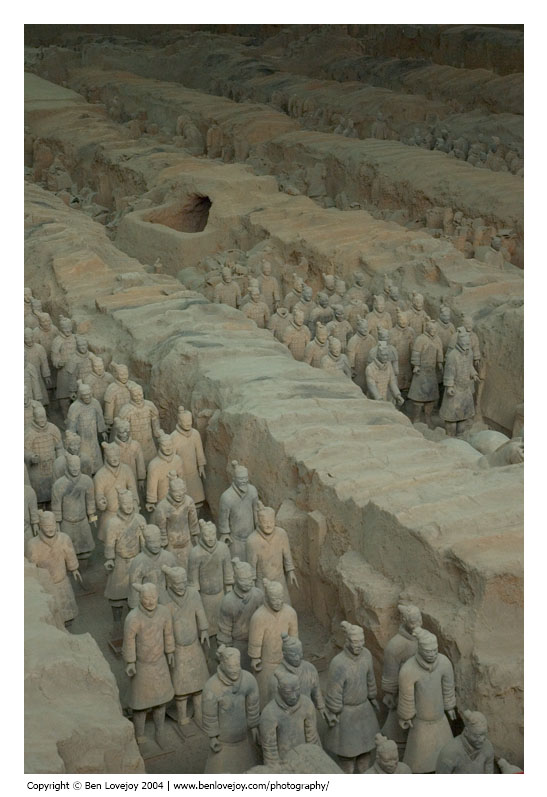
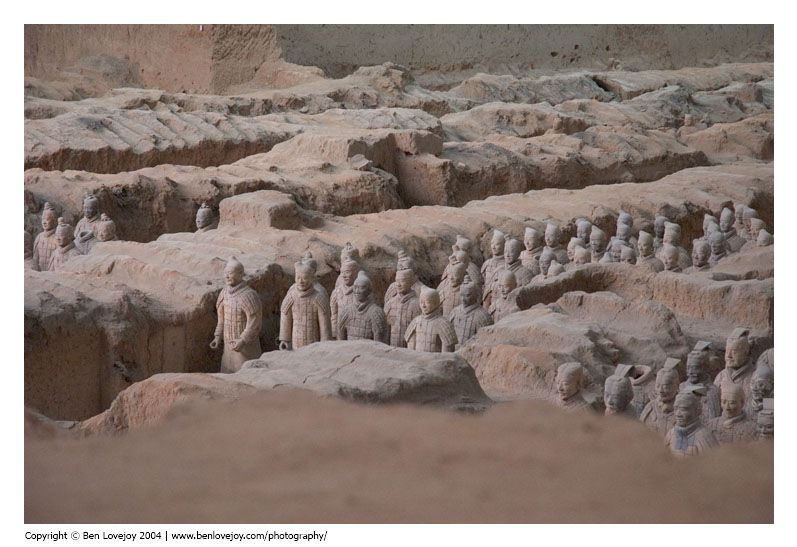

Except not quite, because they were originally painted in bright colours. Once uncovered, the paint oxidised, to leave the unpainted pink. Work is being done to develop a fast-application coating to protect the paint. Until that has been created, the majority of the warriors will remain buried. The final stop of the day was a market back in Xi'an. I wanted some hand-carved chopsticks, and found some beautiful boxed sets for £2 each. I thought this was a bargain, but my interpreter was furious at the stallholder for trying to exploit this ignorant foreigner. After a lot of heated discussion, I ended up paying 30p. And then it was time to fly home. The client had only confirmed the project a couple of days in advance, and by that time most of the flights were fully-booked. The only way I could get home from Xi'an was to fly first to Beijing, then to Hong Kong (a long way in completely the wrong direction) and then to London. There was, however, a compensation: for all three of these legs, the only seats left were in First Class. I'd informed the client (who would be picking up the tab), and was told it was fine: the project needed to go ahead on schedule. The Beijing to Hong Kong leg was particularly comfortable. There were just eight seats in First Class, and two cabin attendants to look after them. On that particular flight, I was the only First Class passenger ... See also the Shanghai blog. |
![]()